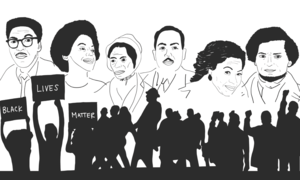text
Visual
We Can Do It!

The iconic poster was designed by J. Howard Miller during World War II for Westinghouse Electric. In recent decades, the image has gained wide popularity as an emblem for feminism and various other political and social movements.
July 3, 2014


